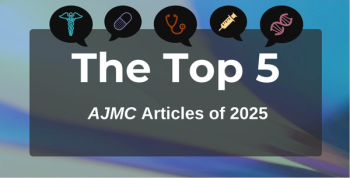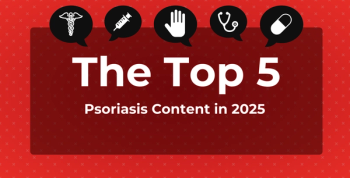
Abemaciclib Plus Endocrine Therapy Improves Overall Survival in High-Risk Early Breast Cancer
Key Takeaways
- Abemaciclib plus endocrine therapy significantly improved overall survival, IDFS, and DRFS in HR-positive, HER2-negative, node-positive early breast cancer.
- The monarchE trial demonstrated a 15.8% reduction in death risk with abemaciclib versus endocrine therapy alone.
Adjuvant abemaciclib (Verzenio; Eli Lilly) plus endocrine therapy prolonged survival in high-risk HR-positive, HER2-negative early-stage breast cancer.
Adjuvant abemaciclib (
Abemaciclib is a cyclin-dependent kinase 4/6 inhibitor targeted for cancer therapy, and the monarchE trial demonstrated a 15.8% reduction in risk of death vs ET (HR, 0.84; 95% CI, 0.72-0.98; P = .027) in the intent-to-treat population at a median follow-up of 76.2 months.1 The newly published data, which make abemaciclib the first therapy in more than 2 decades to show a significant overall survival (OS) benefit in this high-risk patient population, will also be submitted to global regulatory health authorities, according to a press release.2
“For patients, survival is what matters most—and abemaciclib plus ET represents the first contemporary medicine in over two decades to deliver a clear improvement in overall survival in the adjuvant setting,” said lead monarchE investigator Stephen Johnston, MD, PhD, professor of Breast Cancer Medicine and consultant medical oncologist at The Royal Marsden NHS Foundation Trust in London.2
The global, open-label, randomized phase 3 trial enrolled 5637 patients with high-risk, HR-positive, HER2-negative, early-stage breast cancer from July 2017 to August 2019.1 Patients were randomly assigned 1:1 to receive standard adjuvant ET alone (n = 2829) or ET combined with abemaciclib (n = 2808). Patients received at least 5 years of ET with or without 2 years of abemaciclib (150 mg twice daily). IDFS was defined as the time from the receipt of treatment until ipsilateral invasive disease, ipsilateral locoregional invasive disease, contralateral invasive breast cancer, distant recurrence, second primary non-breast invasive cancer, or death from any cause.
The primary OS analysis had a data cutoff of July 15, 2025, at which point there were 661 OS events—301 (10.7%) in the abemaciclib arm vs 360 (12.7%) in the ET-alone arm. At 60, 72, and 84 months, OS rates were 91.2%, 89.2%, and 86.8% in the abemaciclib plus ET arm vs 90.2%, 87.9%, and 85.0% in the ET arm. In both arms, most deaths were associated with breast cancer recurrence.
The most frequent adverse events (AEs) leading to death were infections (including COVID-19 infections), second primary neoplasm, and cardiac disorders, and there were no relevant differences in causes of death related to AEs in either treatment group.
Patients in the abemaciclib cohort also had a reduced risk of IDFS (HR, 0.73; 95% CI, 0.66-0.820; nominal P < .0001). The estimated IDFS rate was 83.1% in the abemaciclib plus ET arm at 5 years vs 76.5% in the ET arm; at 7 years, the estimated IDFS rates were 77.4% and 70.9%, respectively.
“These results represent an important advancement in the care of node-positive, high-risk, HR-positive, HER2-negative disease by delivering meaningful reductions in recurrence and improving survival,” Jacob Van Naarden, executive vice president and president of Lilly Oncology, said.2
The results are in line with prior data, with the initial IDFS analysis showing significant improvements with abemaciclib plus ET vs ET alone (HR, 0.75; 95% CI, 0.60-0.93; P = .01),3 and a 5-year analysis showing sustained improvements in both IDFS (HR, 0.68; 95% CI, 0.599-0.772; nominal P < .001) and DRFS (HR, 0.675; 95% CI, 0.588-0.774; nominal P < .001).4 At 5 years, there was a trend in OS improvement in the abemaciclib that was not yet statistically significant.
"To now have data showing a treatment helps more people live longer is a major step forward for our community," said Sue Weldon, CEO of Unite for HER, in the Eli Lilly press release.2 "We mark this significant milestone while recognizing there's more work ahead to ensure every eligible patient has the opportunity to benefit from treatments that can change lives."
References
1. Johnston S, Martin M, O’Shaughnessy J, et al. Overall survival with abemaciclib in early breast cancer. Ann Oncol. Published online October 17, 2025. doi:10.1016/j.annonc.2025.10.005
2. Eli Lilly Inc.: Lilly’s Verzenio (abemaciclib) prolonged survival in HR+, HER2-, high-risk early breast cancer with two years of treatment. Published October 17, 2025. Accessed October 17, 2025.
3. Johnston SRD, Harbeck N, Hegg R, et al. Abemaciclib combined with endocrine therapy for the adjuvant treatment of HR+, HER2-, node-positive, high-risk, early breast cancer (monarchE). J Clin Oncol. 2020;38(34):3987-3998. doi:10.1200/JCO.20.02514
4. Rastogi P, O'Shaughnessy J, Martin M, et al. Adjuvant abemaciclib plus endocrine therapy for hormone receptor-positive, human epidermal growth factor receptor 2-negative, high-risk early breast cancer: results from a preplanned monarchE overall survival interim analysis, including 5-year efficacy outcomes. J Clin Oncol. 2024;42(9):987-993. doi:10.1200/JCO.23.01994
Newsletter
Stay ahead of policy, cost, and value—subscribe to AJMC for expert insights at the intersection of clinical care and health economics.








































